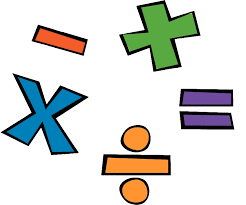Mathematization in the
assessment tests
Dr Ajay Kumar Choubey
(Academic Coordinator, Delhi Board of School Education)
How fair it is to use a pencil
and paper test to assess the mathematical knowledge of a student?
Dr. Ajay
Choubey reports his own views after extensive research on this subjects. He
visited many govt. and private school to analyze how the assessment impacts and
effects the learning atmosphere and suggests a remedy.
Dr Ajay Choubey has been instrumental in bringing a paradigm shift in educational culture in SOSE, Harinagar in the past. His pedagogical skill to cultivate a change in mathematical learning and teaching is being practiced in many schools falling under DBSE where he is presently working as an academic coordinator.

A pencil – and - paper test can capture mathematics only as finished
product available overtly in students’ responses to the pre- scripted
questions. The logic, strategies and process through which the final and overt
responses to questions get appeared can not be apprehended merely by pencil-
and- paper test. Mathematical disposition, mathematical thinking, problem
solving, attitude and eagerness to use mathematics as a strategy and tool of
seeing, thinking and organizing the events , are complex and tacit aspects of
mathematics and mathematisation in the daily life, which can only be captured by
an intimate and a non-intrusive form of assessment i.e. interactive
observation. Along this argument observation and discussion with students about
how they were engaging with mathematical situation had been selected as
trajectory of assessment act.

For analysis purpose a
renowned private school in South Delhi was chosen and a pen and paper test was
conducted there. Though students participated actively voluntarily but as the test began the children came across
the difficulties and unease. The most conspicuous difficulty with which
students were struggling was their inability to read and make out the questions
of the test paper.
a)Most of the students expressed that they did not understand the
questions.
b) Most of the students were not familiar with the Hindi names of
the numbers.
It has been observed that when a facilitator loudly translated the
Hindi name of the number into English, students answers to the questions like, ‘ise anko mein
likho’, the children were noticed also struggling
to comprehend meaning of the words like Ank, kram, gunanfal, bhinna, aakriti,
tribhuj. Students’ were also not comfortable with the word problems. Most
of the students waited for elaborations and prompts from facilitators, whilst
solving the questions of the test, students were observed, seeking help of
their friends and facilitators to translate the given mathematics situation in their
native language, codes and linguistic actions. The difficulties what children
felt with words and words problems were more a problems of decoding the
mathematical statement than deficiency of their arithmetisation of the given
situation.
On the whole, there was a scene of active engrossment of the
students through their loud thinking and acting on the mathematical situations
at hand.
Number sense and counting:
One of the aims of the present assessment
deliberation is to take an account of students’ number sense, i.e. levels of
their comfort or ‘at-homeness’ with numbers. It includes the understanding the number
meaning, relationships between numbers, operations on number and arithmetization
of real-life situation with the help of numbers.
It was observed that a good majority of the students’ of
class IV were known to the size of numbers up to 3-digits. They successfully recognized
the given numbers and also converted them into correct combination of digits.
Nevertheless, most of the students were found not comfortable and confident in
dealing with the 4 and 5-digits numbers due to the lack of the necessary mental
strategies to identify and describe the positional value of a digit.
(Source:-
https://s3.amazonaws.com/www.mathnasium.com/upload/633/images/number_sense.jpg)
Students were
familiar with the relationships between two as well as three digit numbers. They
were able to identify the patterns and also to determine the missing elements
in the number patterns. In these courses , students were observed to be acting as
rational counters. They used varied strategies of counting i.e. ‘counting on’
and ‘counting back’, jump strategies, split strategies and compensation
strategies to complete the questions pertaining to number patterns and orderly
arrangement (i.e., greater than and less than) of the numbers.
However, a significant
number of students were, as observed, not able to arrange the given numbers as
per the rules of ascending and descending. This instance casts doubt about the
students’ understanding of the relationships between numbers. While interacting
with students along this issue, it was discovered that students were familiar
with the orderly relationships between attributes of physical weights and
heights, and also they could arrange some small numbers in ascending and
descending orders. However, they were not able to arrange 3-digit numbers due
to lack of the idea and strategies to deal with position of a digit in the
given numbers.
It was observed
that approximately half of the total population of students were caught by
cognitive slippery caused by the lack of their concepts of place-value which is
a pre.-conditions for understanding the size (orderly) and operational
relationships between numbers.
Students were observed counting the
position of a digit in 2-digit numbers from left to right and stating 17 is
greater than 71. However, at verbal plane, student were of notion that 17 is less
than 71.While talking about the strategies and logics with which students
arrived at correct answer, it was noticed that students attempted the given
mathematical situations primarily with their intuitive grasp and experience of
the cardinity and ordinality of numbers.
Place-value:
The test showed that approximately 42% of students were having issues
with positioning the digits at right place. It was also evident that some of
the students were familiar with the Th-H-T-O continuum i.e., thousands, hundreds,
tens, ones, but their familiarity were merely superficial and nominal. They
mistakenly counted ones, tens and hundreds from left to right and thus, were
not able to identify the position of a digit in hundred and thousand places
correctly. While talking with students, it became obvious that they did not
have explicit knowledge and understanding of the positions of digits indicated in 3-4 digit numbers.
Operations on Numbers:
Students were familiar with operations on
numbers. They understand addition as ‘joining’ and substraction as ‘take way’. Students
appeared to be always looking for these cue words when they encountered the
situation in which addition and substraction were encoded in different words
and phrases. They arrived at correct answer as soon as they found cue words
through prompts of facilitators.
The students were found comfortable to carry
out additions and subtractions on larger numbers, particularly, in which carry
over is required. although, prompts or hints led them to perform operations successfully
in some situations.

Furthermore,
students, as observed, were not interested and confident in solving the
questions involving multiplication. The reason what was observed that students
were not able to recall the basic multiplication facts that is required to find
the product of 8 and 9. They did not even
have idea and strategy to construct multiplication table which is instrumental
for engaging with mathematical situation involving multiplication and division.
They had used informal -intuitive logics and strategy to questions pertaining
to division. For instance, Students seemed reluctant to engage with the
situation i.e. 40/4; but, when the question was reformulated in folk form of
division, i.e., partition or distribution of Rs. 40 into 4 children, students
were found to be quite spontaneous to arrive at the correct outcome. It was also
noticed that students could not solve the question of fraction, though they
were nominally familiar with the word Bhinna (fraction).
Measurement:
In order to estimate, students’ ability and comfortability to understand
and organized day to day life through numbers and numeration, some of the
questions pertaining to measurement strands like weight, time and money were
included in the test. It was observed that most of the students were unable to change
one unit of weight in another units i.e., grams to kilograms and vice-versa. When
the weight strand question was reformulated by stating that if a shopkeeper has
only some weights of 100 grams and you have to buy 1 kg of sugar, then how many
weights of 100 grams need to be places against the desired quantity of sugar.
Some of students gave correct answer i.e. 10.
Source:- https://www.vectorstock.com/royalty-free-vector/measurement-weight-objects-such-as-vector-30894717
Besides,
most of the students were able to understand the clock time. They shared their
familiarity with clock-time acquired as a habit in daily- life. Students also expressed
their acquaintance with the various units of time strand i.e., years, months,
day, week, hour, minute and second. But most of the students could not carry out
addition across months having different numbers of days.
Working Mathematically:
Word problems,
in the test, were used to get an idea about the students’ ability and
comfortability to think and act mathematically so that they can cope up with
situations in day to day life through mathematisation (primarily
arithmatisation at this level).
Most of the students felt difficulties in
solving the word problems because, they did not have adequate linguistic schema
required to unfold the given proposition and find the key informations or cues
to reach at desired outcomes. For instance, the proposition pertaining to
purchasing some vegetables and thereafter, presenting account of expenses and
remainder was not successfully attempted by many of the students. While
discussing about their difficulties, it was noted that most of the students
were having experiences of the act of purchasing articles alone and also giving
account of expenses and remainder to their parents. Yet they could not solve
the analogous situation given in the test. The reason behind this helplessness,
as observed, was their inability to unfold the written propositions.
Source:- https://edma241kb.wordpress.com/2019/03/28/reflective-journal-2/
The Summarised Discussion:
The students’ positive
spirit, enthusiasm and confidence to act upon mathematical situation, are,
probably one of the manifestations of child-centric and constructive engagement
with children in the school.
Having taught mathematics on these principle and practice is vital to
emancipate the repetitive, monotonous, joyless and alienated mathematical
learning of students at the School.
Nevertheless, these
are not the sufficient conditions and steps to transcend the students’ learning
of mathematics beyond their informal-intuition mathematical dispositions and
agencies.
The formal way of mathematisation depends substantially on some
concepts, symbols and algorithm. The level and degree of successful
mathematisation by students are determined by the extent to which they
internalize all these elements in their cognitive make-up.
Besides, the learning of mathematics at
school can not be organized either as an informal-intuitive praxis of engaging
with situations mathematically or as a formal analytic doctrine of mathematics,
mistakingly conceived or practices as a kind of mathematics devoid of
commonsense.
The formal mathematics is a
necessary extension of commonsensical mathematics which needs to be built upon
the informal-intuitive make-up of students’ mathematical praxis.
The
test reveals the definable deficit in algorithmic articulation and presentation
of mathematical situations at hand. The students were found showing reluctant
to follow the standard algorithm of mathematization, particularly in relation
to multiplications and divisions. Instead, they (some of the students) were
having their own version of algorithm. It was interesting to be exposed with
students’ own algorithm may be taken as celebration of constructive learning in
mathematics in this school. However, they were observed confused and at unease
even in using their own version of algorithm required for arithmatisation of
the situations. On asking, students attested teachers’ efforts to make them
learn the reasonable algorithm. Yet, the observation of students’ lacking in
algorithmic strategies to deal with situations, at least indicates a pedagogic
misfire in teaching of either form of algorithm, be it intuitive or formal at
optimum level. It is pertinent to note that the algorithm is one of the
threshold concepts in mathematics which needs to be handled with greater care
and sensitivity. In order to develop students’ abilities to use algorithm as an
integral trajectory or path of mathematisation, material based activity can be placed
at the centre of teaching- learning process.
Concrete materials can, thus, be instrumental for conceptualization of
steps in algorithm, but, they must be manipulated with care for attaining
logico-mathematical experience of sequence of steps (i.e. algorithm) in
mathematisation. This needs further to be supplemented with basic facts (e.g.
counting, tables) required to reduce cognitive overload in learning the steps
in algorithm. Besides, estimation and rounding skills can also be used to check
the arbitrariness in individual algorithmic strategy and eventually to
(re)shape students’ own version of algorithm.
Besides, students were also observed lacking the concept of fraction,
operations on decimal along with their less-developed spatial thinking,
concepts and ability to solve geometrical situation successfully. Hence it is
imperative on the part of teachers to reconstruct the pedagogic underpinning
and practices as to empower and emancipate students mathematically.
Further, one glaring problem, as witnessed,
was students’ inability to unpack the questions embedded in key words, phrases
and sentences. This can be misconstrued as in-efficiency of the students’
linguistic schema; an issue, generally to be thought, exists beyond mathematics
class room. The discomfort and unease displayed by students in solving the
word-problems were not due to students’ lacking of the strategies and skills of
mathematisation, but, as observation indicates, due to students’ inability to
decipher the written situation with suitable strategies of reading and
comprehending.
The
difficulties encountered by students to deal with word problems and act
mathematically indicate towards the pedagogic gap between what is required and
what is supplied as to contextualize the learning in mathematics, and also to
link school mathematics with daily –life. The efforts of contextualization of
mathematics in this school, as revealed, suffer from the inadequate material
based activities on the one hand and limited time and low frequency of
students’ involvement in manipulating and performing activities on the other
hand.
While,
it is important to allow students to construct their own meanings and
strategies for mathematical situation, it is equally necessary to see that when
students enter the school their pre-existing intuitive knowledge and
experiences need to be nurtured and transformed into explicit and dynamic
cognitive structure.
Dr. Ajay Kr. Choubey
ajay.choubey@hotmail.com
( This article has been edited for the blog. Author can be requested for the access of full article on his email.)


















